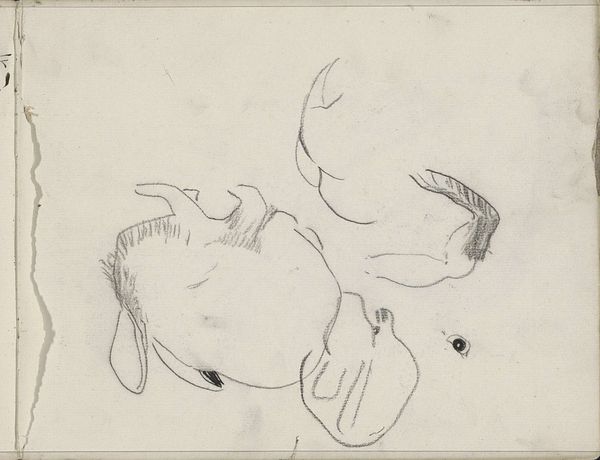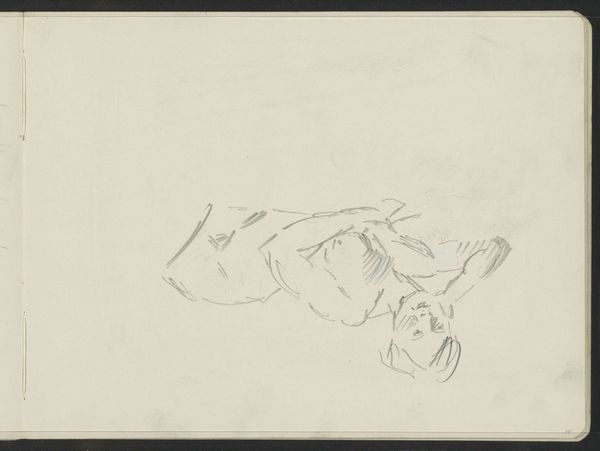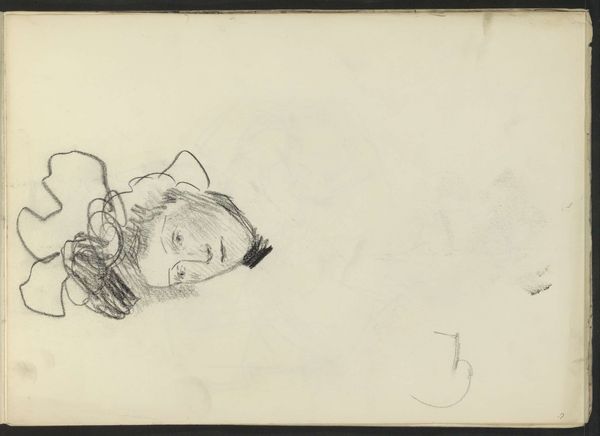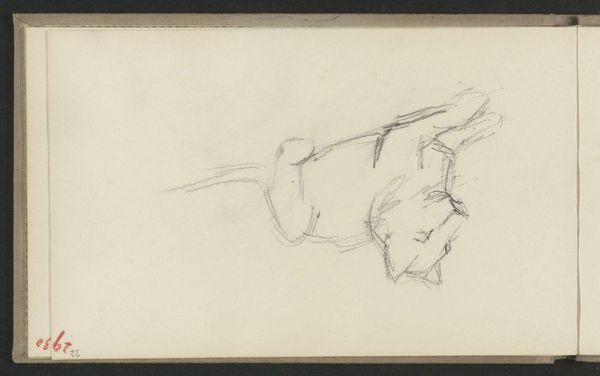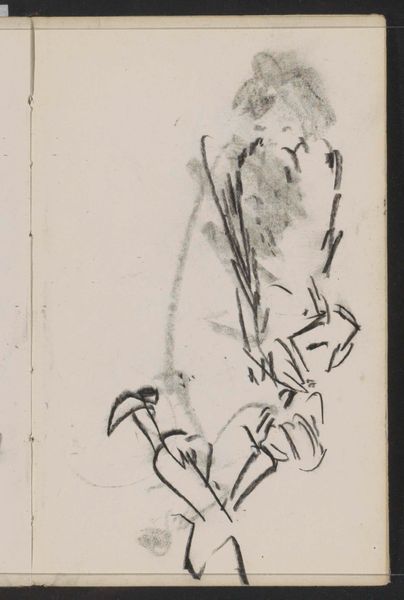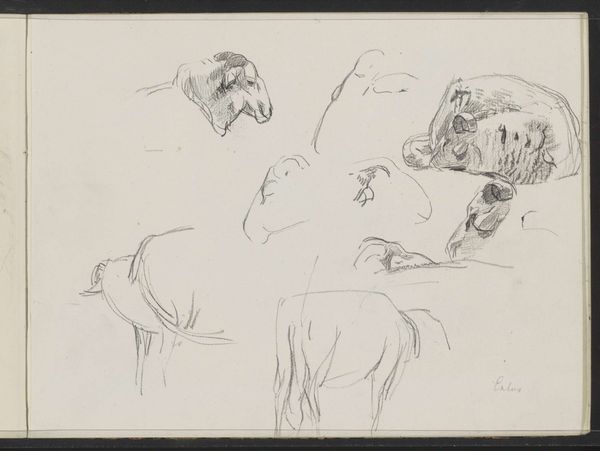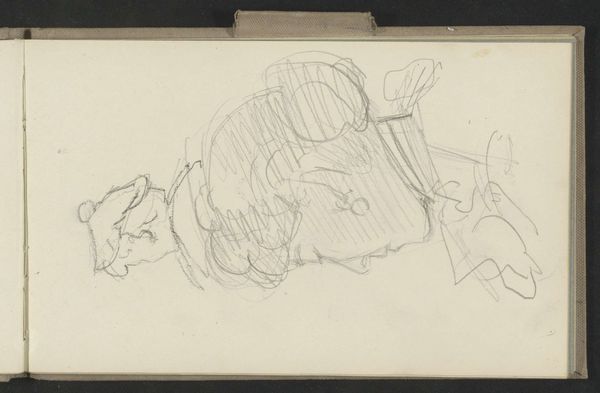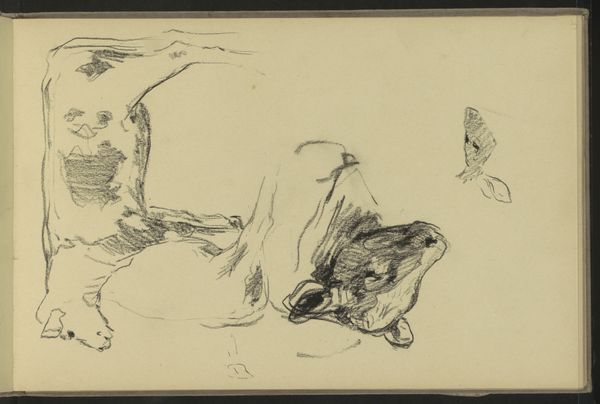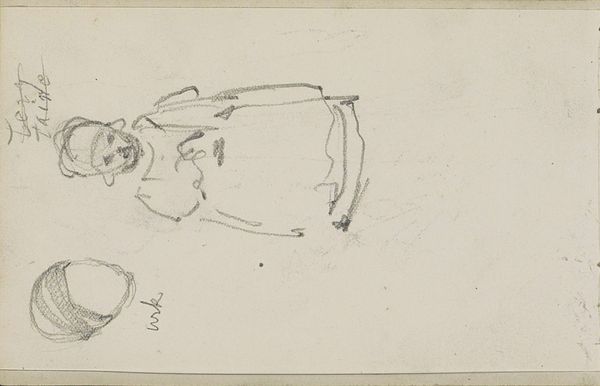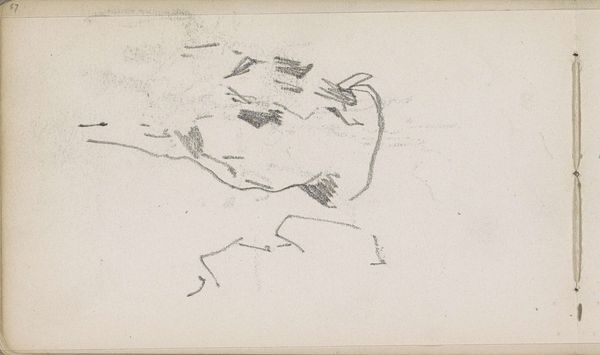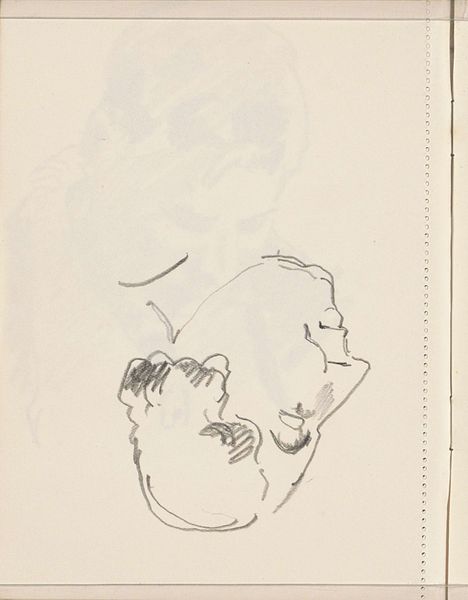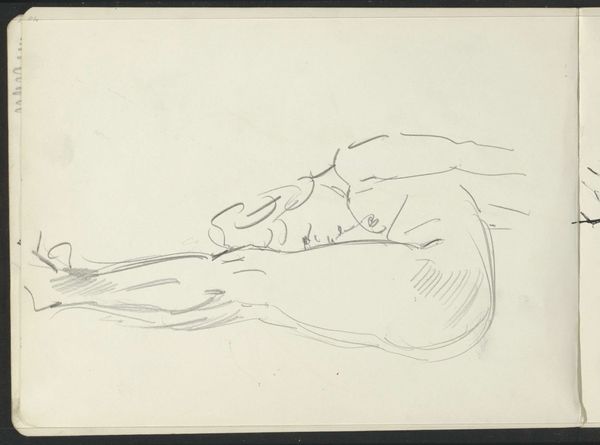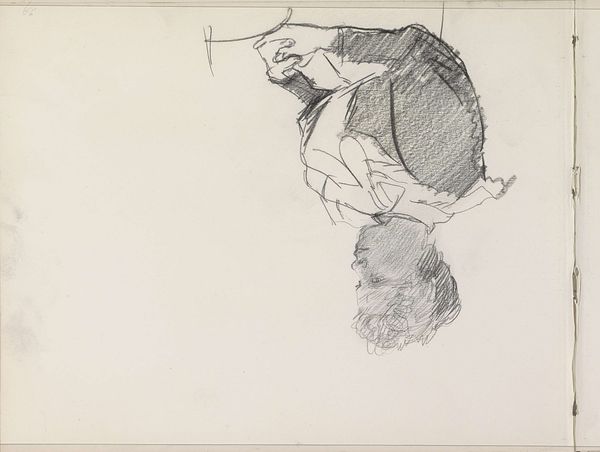
drawing, ink, pencil
#
drawing
#
ink drawing
#
dutch-golden-age
#
landscape
#
ink
#
pencil
#
realism
Copyright: Rijks Museum: Open Domain
Editor: So, this is "Drie liggende koeien," or "Three Lying Cows," by Willem Witsen, done sometime between 1901 and 1907 using ink and pencil. There's something so casual and serene about it, despite being such simple lines. What do you see in it? Curator: I see echoes of pastoral ideals, particularly in the context of early 20th-century Netherlands. The cow, throughout history, symbolizes nourishment and agrarian life, connecting us to a primal source. Witsen's choice of seemingly unburdened lines makes me think of fleeting moments, akin to capturing a memory of simpler times as the country industrialized. How does the composition resonate with you? Editor: I think the cows seem almost piled together. It gives me this feeling of comfortable chaos, like they're a group, but each still exists independently. Almost like, an attempt at depicting comfort. Curator: An insightful point! The piled arrangement, a subversion of traditional formal compositions, could suggest the rise of modernism. Individuality, but in communion, hinting at new social structures. Considering his use of realism, do you think it reflects the cultural and social landscape back then? Editor: I do. It feels very unromanticized, like a glimpse into real life, compared to what I imagine pastoral scenes "should" look like. It also feels "unfinished," like you're watching someone sketching in real time. Curator: Exactly! That ‘unfinished’ quality invites the viewer to actively participate, bridging the gap between reality and representation. By reducing the cow to simple lines and forms, what are the inherent qualities of this imagery and symbology, and how are those elements presented here? Editor: Wow, that definitely shifts my understanding. I was stuck on just seeing it as 'cows', but I'm beginning to grasp the deeper layers about that cultural moment. Thanks. Curator: And thank you, it's amazing to examine the art pieces with you, thinking about it through both our different backgrounds.
Comments
No comments
Be the first to comment and join the conversation on the ultimate creative platform.
